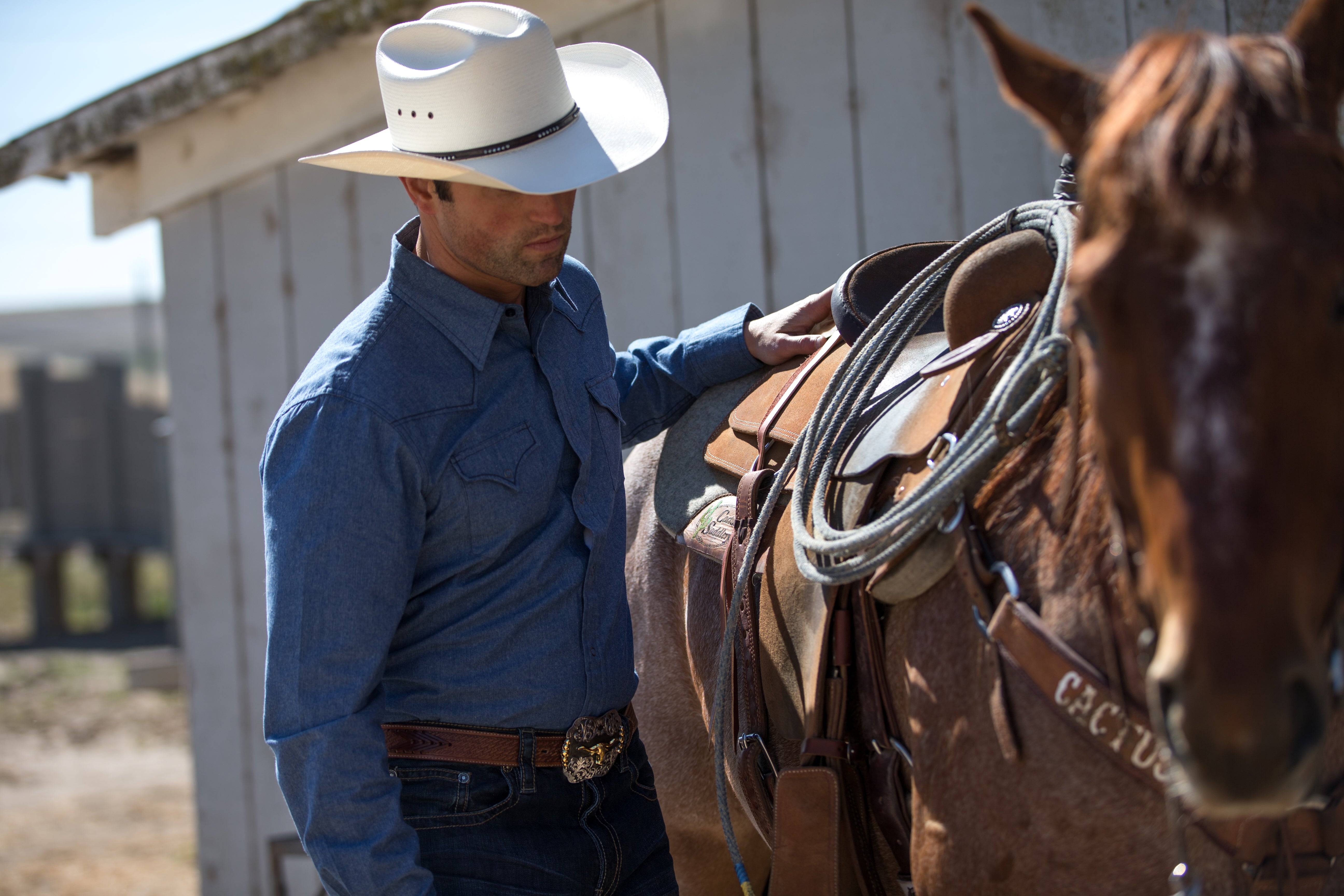Cowboy hats are an iconic symbol of the American West, steeped in history, culture, and tradition. They have evolved from functional headgear worn by cowboys and ranchers to a global fashion statement. Whether made of felt, straw, or leather, cowboy hats carry a sense of rugged individualism and adventure that resonates with people around the world.
The Origins of the Cowboy Hat
The cowboy hat as we know it today is a relatively recent development, emerging in the mid-19th century. However, its roots can be traced back to several earlier hat styles, including the Mexican sombrero and the wide-brimmed hats worn by farmers and herders across Europe. The sombrero, with its broad brim and high crown, provided excellent sun protection for Mexican vaqueros (cowboys) and was a clear influence on the design of the cowboy hat.
The first true cowboy hats were not specifically designed for cowboys but were adapted from hats worn by soldiers, farmers, and other outdoor workers. The bowler hat, also known as a derby, was popular in the mid-1800s and was often worn by cattlemen. However, the bowler's small brim provided limited protection from the sun, leading to the need for a more practical hat for life on the open range.
The Birth of the Stetson Hat
The turning point in the history of the cowboy hat came in 1865 when John B. Stetson, the son of a hat maker, created what is widely regarded as the first true cowboy hat. Stetson, who had been diagnosed with tuberculosis, moved to the American West to improve his health. While there, he was inspired by the wide-brimmed hats worn by Mexican cowboys and set out to create a hat that was durable, waterproof, and protective against the harsh elements of the frontier.
Stetson's creation, known as the "Boss of the Plains," featured a high crown to provide insulation and a wide brim to shield the wearer's face, neck, and shoulders from the sun and rain. The hat was made from high-quality fur felt, which was not only waterproof but also breathable. The "Boss of the Plains" quickly gained popularity among cowboys, ranchers, and other Westerners for its practicality and durability.
John B. Stetson's hats became so popular that "Stetson" became synonymous with cowboy hats. His company, the John B. Stetson Company, went on to become one of the largest hat manufacturers in the world, and Stetson hats remain a symbol of quality and craftsmanship to this day.
Evolution of Cowboy Hat Styles
As the cowboy hat grew in popularity, different styles and variations began to emerge. While the original "Boss of the Plains" design was simple and utilitarian, cowboys began to customize their hats to reflect their individual personalities and needs. Over time, certain styles became associated with specific regions or professions.
The Cattleman
The Cattleman style is one of the most traditional and recognizable cowboy hat designs. It features a crease down the center of the crown with two additional creases on either side, creating a distinct "pinch" shape. The brim is usually medium in width and slightly curved. The Cattleman style became popular among ranchers and cattlemen in the late 19th and early 20th centuries, and it remains a classic choice for cowboy hat enthusiasts today.
The Gus
The Gus style, named after a character in the 1989 TV miniseries Lonesome Dove, features a distinctive "teardrop" crown shape with a deep center crease and pinched front. The brim is typically wider and more dramatically curved than that of the Cattleman. This style became popular in the Southwest, where it provided extra sun protection. The Gus hat is a favorite among modern cowboys and Western film enthusiasts alike.
The Tom Mix
Named after the silent film cowboy star Tom Mix, this hat style features a tall crown with a pronounced pinch in the front and a wide, flat brim. The Tom Mix style was popular in the early 20th century and became associated with Hollywood's portrayal of the cowboy. This hat's dramatic shape made it a favorite of Western film stars and remains an enduring symbol of the silver screen cowboy.
The Open Road
The Open Road style is characterized by a lower, more rounded crown and a narrow brim with a slight curve. It is often associated with politicians and public figures, such as former U.S. President Lyndon B. Johnson. The Open Road hat is a versatile style that can be worn in both formal and casual settings, making it a popular choice for those who want a more understated Western look.
Cowboy Hats and the Wild West
The late 19th and early 20th centuries were the heyday of the American cowboy, and cowboy hats played a crucial role in defining the image of the cowboy during this era. Cowboys spent long hours in the saddle, often working in harsh conditions, and their hats were essential tools for survival. The wide brim protected them from the sun, while the hat's crown could be used to carry water, fan a fire, or signal to others from a distance.
Cowboy hats also served as a symbol of status and identity. A well-worn hat could indicate a cowboy's experience, while a new hat was often a sign of prosperity. Many cowboys would shape and customize their hats to make them unique, whether by adding a band of tooled leather, a decorative feather, or a silver concho.
The image of the cowboy, complete with a Stetson hat, became romanticized in literature, art, and film. The cowboy was depicted as a rugged individualist, a hero who tamed the wilderness and upheld justice. This image was perpetuated by dime novels, Wild West shows, and later, Hollywood Westerns. As a result, the cowboy hat became inextricably linked with the mythology of the American West.
The Decline and Resurgence of the Cowboy Hat
As the frontier closed and the era of the open range came to an end in the early 20th century, the practical need for cowboy hats began to decline. Many cowboys found work in other industries, and the once-essential hat became more of a symbol than a necessity. However, the cowboy hat never disappeared from American culture.
In the 1930s and 1940s, the rise of Western films and the popularity of cowboy stars like Roy Rogers, Gene Autry, and John Wayne helped keep the cowboy hat in the public eye. These stars were rarely seen without their signature hats, and their films celebrated the virtues of the cowboy way of life. The cowboy hat became a symbol of rugged masculinity and American values, inspiring generations of fans to don their own Western headgear.
The post-World War II era saw a resurgence in interest in cowboy culture, particularly in the Southwest. The cowboy hat became a symbol of regional pride and a connection to the land. Rodeos, country music, and Western fashion all contributed to the enduring popularity of cowboy hats during this period. The hat's association with country music stars, from Hank Williams to Willie Nelson, further solidified its place in American culture.
Cowboy Hats in Modern Fashion
In the latter half of the 20th century, the cowboy hat transcended its Western roots and became a global fashion statement. Designers began incorporating cowboy hats into their collections, and the hat was embraced by a diverse range of subcultures. From rock and roll to high fashion, the cowboy hat became a versatile accessory that could be worn in a variety of contexts.
One of the key moments in the cowboy hat's journey into mainstream fashion came in the 1980s, when the urban cowboy trend took hold. Popularized by the 1980 film Urban Cowboy, starring John Travolta, this trend brought Western fashion to city dwellers. Cowboy hats, along with boots, jeans, and plaid shirts, became must-have items for anyone looking to capture the spirit of the West, even if they lived far from the open range.
The cowboy hat also found a place in popular music beyond country. Rock stars like Bob Dylan, Neil Young, and even Madonna have all been known to sport cowboy hats at various points in their careers. The hat's association with rebelliousness, independence, and authenticity made it a natural fit for rock and roll's ethos.
In the 21st century, the cowboy hat continues to evolve and adapt to changing fashion trends. Designers like Ralph Lauren and Tommy Hilfiger have incorporated cowboy hats into their collections, bringing a touch of the West to high fashion. Celebrities like Beyoncé, Pharrell Williams, and Lady Gaga have also helped to keep the cowboy hat relevant in popular culture.
The Future of the Cowboy Hat
The cowboy hat's enduring popularity is a testament to its versatility and cultural significance. While it remains deeply rooted in the traditions of the American West, the cowboy hat has proven to be a remarkably adaptable accessory that can be worn by people of all backgrounds and styles.
As fashion trends continue to evolve, it is likely that the cowboy hat will continue to find new expressions and meanings. Whether worn as a statement piece on the runway, a symbol of regional pride at a rodeo, or a nod to Western heritage at a music festival, the cowboy hat remains a powerful symbol of individuality, resilience, and adventure.
Conclusion
The history of the cowboy hat is a story of innovation, adaptation, and enduring cultural significance. From its humble beginnings as a practical piece of frontier gear to its current status as a global fashion icon, the cowboy hat has come to represent much more than just a hat. It embodies the spirit of the American West—its rugged landscapes, independent people, and timeless values.




